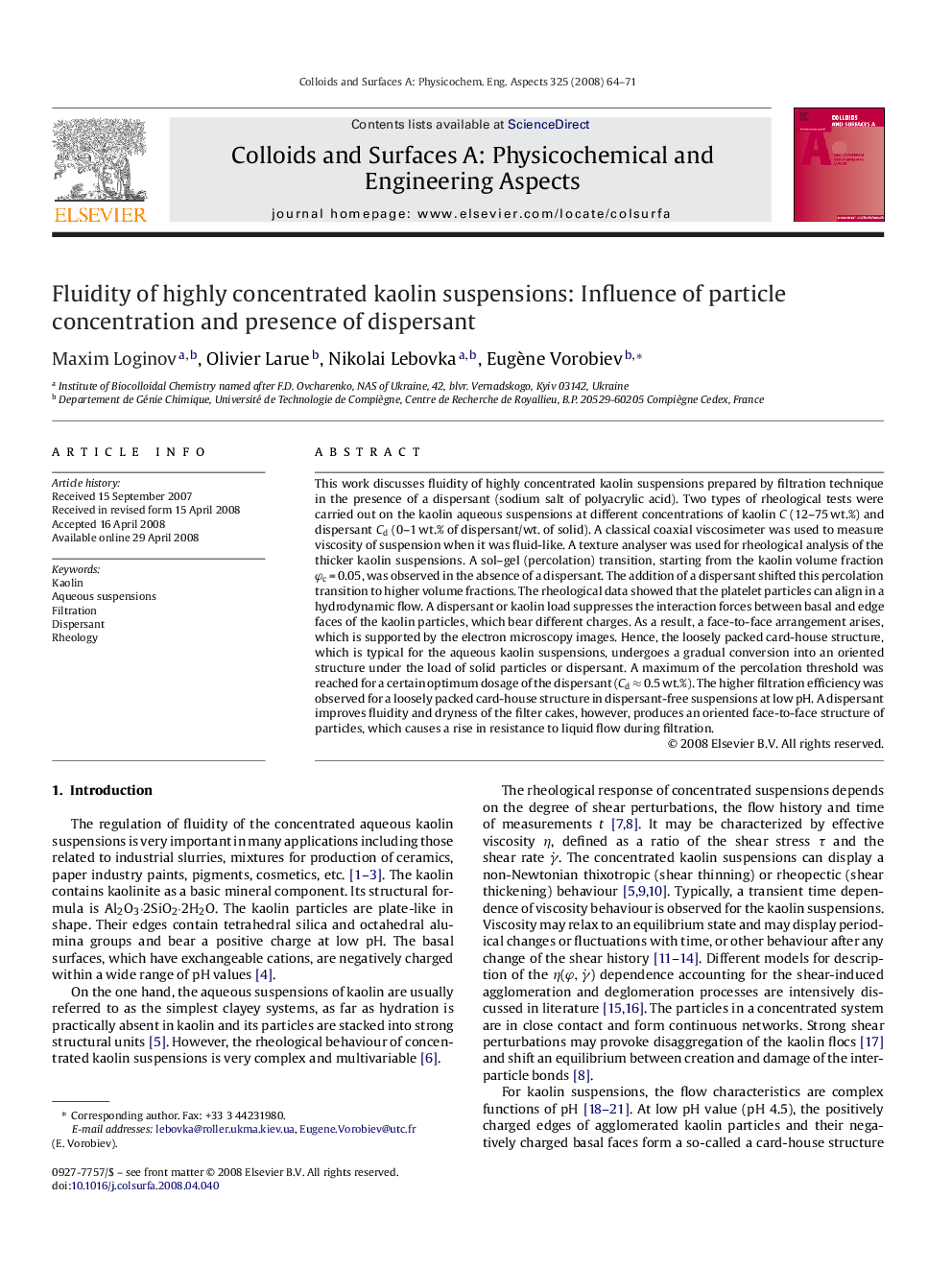| Article ID | Journal | Published Year | Pages | File Type |
|---|---|---|---|---|
| 596358 | Colloids and Surfaces A: Physicochemical and Engineering Aspects | 2008 | 8 Pages |
This work discusses fluidity of highly concentrated kaolin suspensions prepared by filtration technique in the presence of a dispersant (sodium salt of polyacrylic acid). Two types of rheological tests were carried out on the kaolin aqueous suspensions at different concentrations of kaolin C (12–75 wt.%) and dispersant Cd (0–1 wt.% of dispersant/wt. of solid). A classical coaxial viscosimeter was used to measure viscosity of suspension when it was fluid-like. A texture analyser was used for rheological analysis of the thicker kaolin suspensions. A sol–gel (percolation) transition, starting from the kaolin volume fraction φc = 0.05, was observed in the absence of a dispersant. The addition of a dispersant shifted this percolation transition to higher volume fractions. The rheological data showed that the platelet particles can align in a hydrodynamic flow. A dispersant or kaolin load suppresses the interaction forces between basal and edge faces of the kaolin particles, which bear different charges. As a result, a face-to-face arrangement arises, which is supported by the electron microscopy images. Hence, the loosely packed card-house structure, which is typical for the aqueous kaolin suspensions, undergoes a gradual conversion into an oriented structure under the load of solid particles or dispersant. A maximum of the percolation threshold was reached for a certain optimum dosage of the dispersant (Cd ≈ 0.5 wt.%). The higher filtration efficiency was observed for a loosely packed card-house structure in dispersant-free suspensions at low pH. A dispersant improves fluidity and dryness of the filter cakes, however, produces an oriented face-to-face structure of particles, which causes a rise in resistance to liquid flow during filtration.
